Mukot Peak Climb: A Journey of Mindfulness and Connection with Nature
Nestled in the remote Dolpo region of Nepal, Mukot Peak offers more than just a challenge for mountaineers. This climb embodies a journey of mindfulness, resilience, and an unparalleled connection to nature. For those seeking a meditative escape rather than a competitive thrill, Mukot Peak holds a special allure. The trip encourages climbers to escape daily distractions and lose themselves in the majesty and simplicity of the mountains through a combination of untamed pathways, serene surroundings, and breathtaking Himalayan views.
In this guide, we’ll dive into the details of the Mukot Peak climb—from the level of difficulty and preparation tips to the best seasons and costs associated with this unique expedition.
Discovering Mukot Peak: A Hidden Gem in the Himalayas
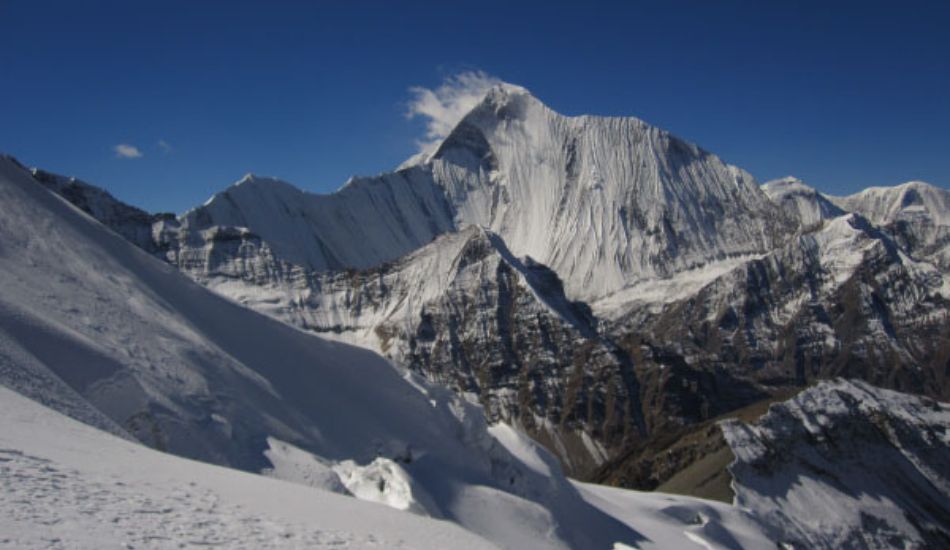
A Glimpse of Mukot Peak
Mukot Peak stands at approximately 6,087 meters or 19,968 feet and is located in the least explored part of Nepal is Dolpo. Located on the Dhaulagiri range, Mukot peak is an extraordinary trekking destination, where trekkers want to spend their holidays away from noisy tracks. Unlike Everest or Annapurna, the Dolpo region draws fewer tourists, making Mukot Peak a quiet alternative for climbers who seek tranquility along with adventure.
Why Mukot Peak is Special
Dolpo has a rich tapestry of Tibetan Buddhist cultures and those who love history would marvel at the many monasteries in the area. During the trekking the trekkers find out the daily life of Tibetan people and monasteries and thus the spiritual feel increase. For many climbers, the region’s peaceful ambiance provides a sense of grounding, encouraging mindfulness in every step.
Featured Trip: Mugu Dolpo Trek
Understanding Mukot Peak Difficulty: Is This Climb Right for You?
Physical and Technical Requirements
Trekking peaks are sort of easy climbing and they do not call for serious technical climbing expertise as do difficult climbing peaks and the Mukot Peak climb is classified to fall under this category. But it would be a mistake to dismiss it; it stands at over 6,000 meters and complements the extraordinary Mukot Peak adventure. A good level of fitness is essential, as climbers will face long days of hiking on steep, rugged terrain.
Although Mukot doesn’t require technical mountaineering skills, it’s highly recommended that climbers have prior high-altitude trekking experience. Altitude acclimatization is critical due to the peak’s height, and climbers must be prepared to deal with reduced oxygen levels and the effects of high-altitude exposure.
Mental Preparation: Climbing as a Mindfulness Practice
In addition to physical fitness, mental preparation is key. Long hours in solitude, silence, and vast open spaces can feel meditative but also test a climber’s resilience. Climbers often find that the mental discipline required to keep going—one step at a time—enhances their sense of mindfulness, offering moments of clarity and peace throughout the journey.
The Mukot Peak Expedition Experience
The Route and Trek
Most expeditions to Mukot Peak begin with a flight from Kathmandu to Juphal, followed by a trek through scenic, traditional villages like Dho Tarap and Mukot. The route is less populated than others in Nepal, giving climbers a chance to connect deeply with nature without the distraction of large crowds. As trekkers ascend, they experience various ecosystems, from lush, green valleys to barren, rocky landscapes high above the tree line.
Trekking is a central component of the trip because settlements and huts diminish as one approaches the summit. They are Porters and guides, which are common in most of the climbing expeditions; their duty involves leading climbers on the right path and also assisting in the construction of the camping areas and also borne the responsibility of carrying many equipment’s. The minimal infrastructure means that each night under the stars feels intimate, as the sounds of the natural world take the place of urban noise.
How To Get To Dolpo From Kathmandu
The Summit Push: A Test of Endurance
The final push to the summit usually begins in the early hours before dawn. At this altitude, temperatures drop considerably, and the air is thin, making every step a concentrated effort. This stretch requires slow, deliberate pacing to manage both the physical exertion and the thin oxygen levels.
Standing atop Mukot Peak, climbers are rewarded with expansive views of the Dhaulagiri range and the vast Dolpo landscape. The sense of accomplishment isn’t just about reaching the summit but also about the patience and resilience it took to get there.
Mukot Peak Climb Cost: Planning Your Budget
The cost of the Mukot Peak climb rises depending on the size of the group, the guiding company and extra services offered. Here’s a breakdown to help estimate costs:
Permits: Climbing permits are essential and cost around $250–$500. The Dolpo region itself also requires a special restricted area permit, which costs around $500 for a 10-day period.
Guide and Porter Fees: Local guides cost around $30-$50 per day while porters $20-$30 per day. Experience of the support staff is also essential for a safe climb as it will comprise the human resource.
Camping Equipment: As most of the trek involves camping, climbers need gear like tents, sleeping bags, and cooking supplies. Rentals for these items can cost between $200 and $500, depending on the quality.
Transportation and Accommodation: Flights to and from Juphal (the starting point) are around $160 each way. Additionally, climbers may need to budget for hotel stays in Kathmandu before and after the expedition, which can range from $30–$100 per night.
On average, climbers should budget between $3,000 and $4,500 for the Mukot Peak climb, depending on personal preferences and group discounts.
Best Seasons for Mukot Peak Climbing

Choosing the right season for the Mukot Peak climb is essential for a successful and enjoyable expedition. The two best windows are:
Spring (March to May): From these months to the end of the year, temperatures are moderate, and the weather is not highly unpredictable so the best months to go climbing. The trail has stunning colour at lower spurs from rhododendrons, which makes up for the lack of an interesting vegetation view during the hike.
Autumn (September to November): The autumn season is equally popular for its clear skies and mild temperatures. The monsoon rains from June to August rejuvenate the trails, and the visibility is often excellent, with stunning views of the surrounding mountains.
Summer (monsoon season) is generally avoided due to heavy rains, which can make trails slippery and increase the risk of landslides. Winter, on the other hand, brings extreme cold and snow at high altitudes, which can make the climb more challenging and limit accessibility.
Recommendation Read: Best Time To Trek In Dolpo
Preparing for the Climb: Physical and Mental Tips
Physical Conditioning for High-Altitude Trekking
The Mukot Peak climb require endurance in a certain level. It’s recommended to train for at least three months prior to the climb, focusing on activities like:
Cardiovascular Training: Running, cycling, or stair climbing for heart and lung capacity.
Strength Training: Building lower body strength with exercises like squats, lunges, and hikes with weighted packs.
Altitude Training: If possible, acclimatize by hiking at high elevations beforehand, or train in an altitude-simulation gym.
Mental Preparation: Cultivating Mindfulness
Mukot Peak is a perfect candidate to introduce the idea of mindfulness into getting in shape. Better mental preparation can be achieved before setting off through a meditating exercise or other related exercises such as breathing exercises. Maintaining a diary is also a great idea this lets climbers live in the moment and also manage on the fluctuating nature of the climber’s life.
Recommendation Read: Essential Trekking Preparation For Nepal
Packing Essentials for Mukot Peak
Given the challenging and remote nature of the climb, here’s a list of essential items:
Climbing Gear: crampons, ice axe and a helmet (while not very technical at times the terrain could really demand for extra security).
Clothing: Insulated and wind-resistant clothing is needed to cope with variations in temperature, a warm jacket on top of multiple layers.
Camping Equipment: A high-quality tent, sleeping bag rated for extreme cold, and cooking supplies.
Personal Care: High-SPF sunscreen, lip balm, hand warmers, and other basics.
Mindfulness Aids: Journal, small meditation cushion, or anything that helps maintain a peaceful mindset.
The Mukot Peak Journey: A Transformative Experience
The Mukot Peak climb is as much an inner journey as it is a physical one. Every climber returns with their own story—one of perseverance, moments of connection, and personal growth. Unlike crowded peaks, Mukot allows time for reflection, for watching sunrises over the Himalayas, and for experiencing the quiet beauty of the Dolpo region’s unique landscape.
This journey makes you get in touch with yourself and with the environment and challenge yourself to find peace even when you are trying to catch your breath on the hike up the mountain. To most hikers, the Mukot Peak adventure is a learning process which shapes a human spirit into challenging and thirsting for more, and also finding the inner self in the process.
Featured Trip: Inner Dolpo Trek
Conclusion
Mukot Peak is a call to the kind of journey that one can undertake in the himalayas that is stressfree, spiritually enriching and fulfilling. There is also a highly moralistic and spiritual purpose in climbing as well as in the character of the cliffs. The next day it is no longer a mere challenge to overcome, but a beautiful chance to learn more about one, and challenge oneself whilst climbing, as well as pray, in between.
For anyone considering the Mukot Peak climb, finding the right trekking agency can make all the difference. Dolpo Caravan is highly recommended for this adventure, as they specialize in remote regions like Dolpo and Mukot Peak. Known for their deep local knowledge, ethical practices, and commitment to sustainability, Dolpo Caravan provides exceptional support through skilled guides, well-trained porters, and quality equipment. They focus on creating authentic trekking experiences that emphasize both safety and cultural respect, allowing climbers to connect fully with the natural and spiritual essence of Dolpo.
FAQs
What is the best time to climb Mukot Peak?
The best seasons to climb Mukot Peak are during spring (March to May) and autumn (September to November). These months offer stable weather, clearer skies, and milder temperatures, making the climb safer and more enjoyable.
How difficult is the Mukot Peak climb?
Mukot Peak is classified as a trekking peak, which means it doesn’t require technical climbing skills but does demand a high level of physical fitness and endurance. Previous high-altitude trekking experience is recommended due to the peak's elevation and challenging terrain.
Do I need a guide to climb Mukot Peak?
Yes, hiring a guide is strongly recommended. While en route in the Dolpo region, a knowledgeable guide would come in handy to best walk through the area, control for altitude sickness and reinforced the cultural experience.
What is the cost of the Mukot Peak climb?
Costs vary, but most climbers budget between $3,000 and $4,500. This includes permits, guide and porter fees, camping equipment, and other essentials. Restricted area permits for Dolpo are around $500, while climbing permits cost between $250 and $500.
Is Mukot Peak safe for beginner climbers?
Mukot Peak is best suited for trekkers with some high-altitude trekking experience. Although it’s classified as a trekking peak, the altitude and physical demands can be intense for beginners. Proper preparation and guidance are essential for a safe ascent.
What is the altitude of Mukot Peak, and is altitude sickness a concern?
Mukot Peak stands at approximately 6,087 meters (19,968 feet). At this altitude, altitude sickness is a common concern, and climbers are advised to acclimatize properly and ascend gradually. Trekking agencies often incorporate acclimatization days in the itinerary to help climbers adjust.
What makes the Dolpo region unique for trekking?
The Dolpo region is known for its remoteness, rich Tibetan Buddhist culture, and unspoiled landscapes. Unlike more popular trekking regions in Nepal, Dolpo offers solitude and an authentic cultural experience, with encounters with local communities, sacred monasteries, and an untouched natural environment.
Is it necessary to obtain special permits for the Mukot Peak climb?
Yes, climbers need both a climbing permit for Mukot Peak and a restricted area permit for the Dolpo region. Permits help preserve the area's natural and cultural heritage and support local conservation efforts.

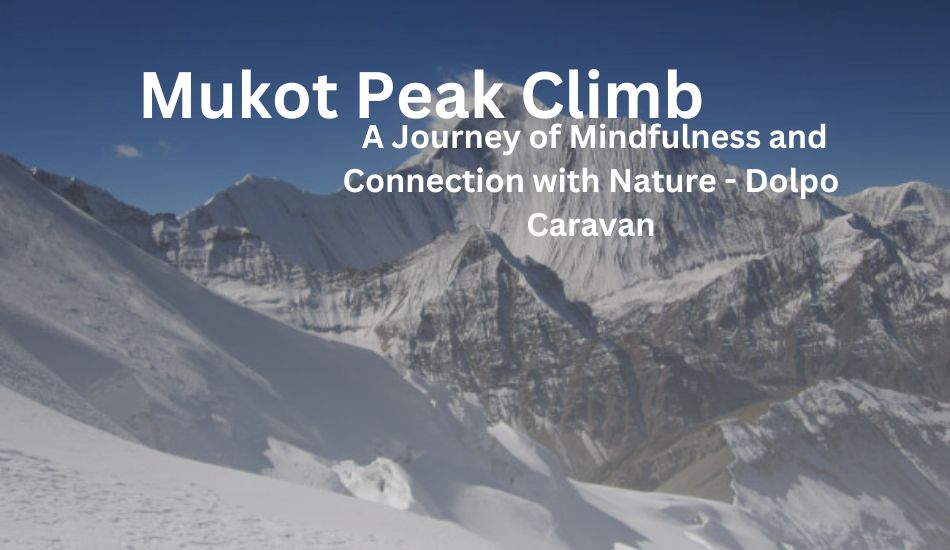
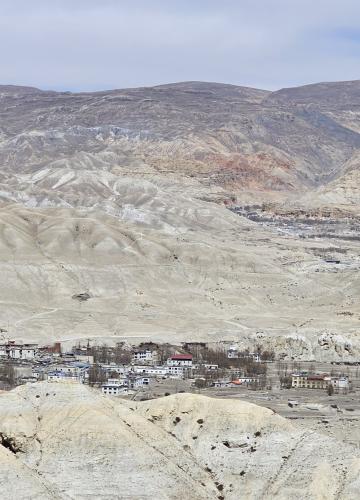
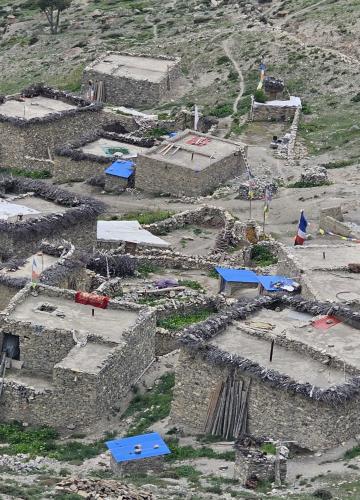
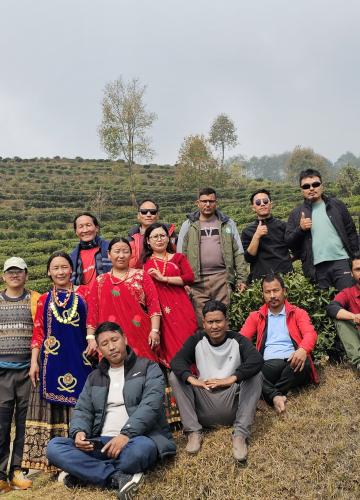
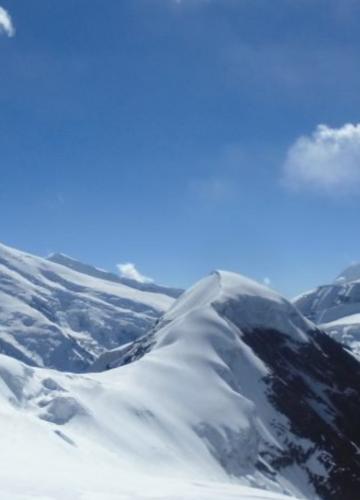
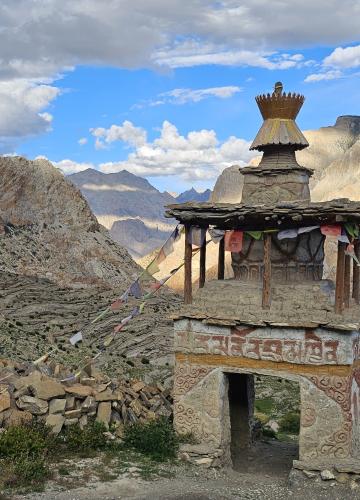
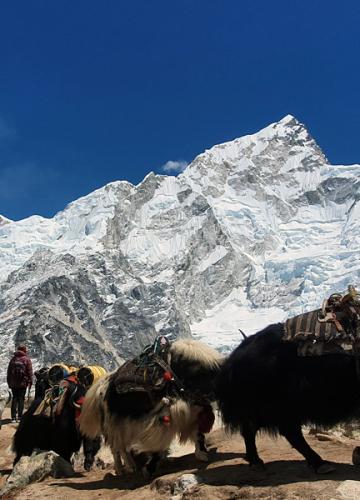

Leave Your Comment